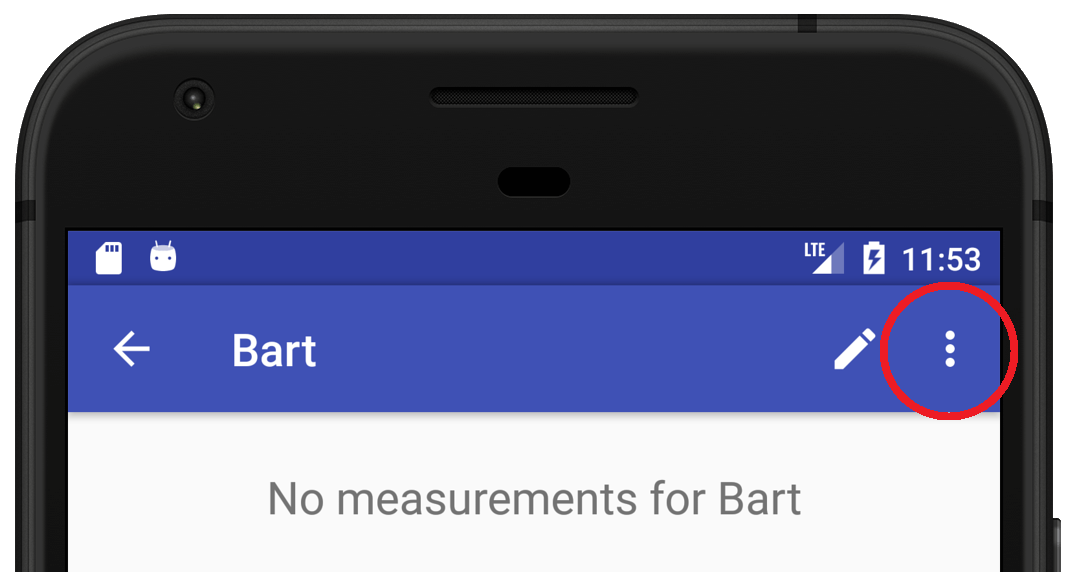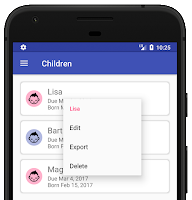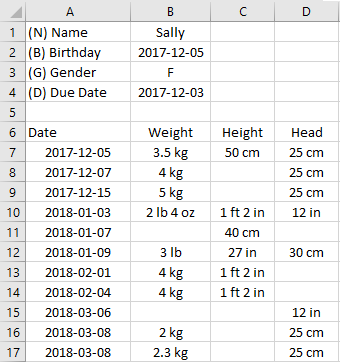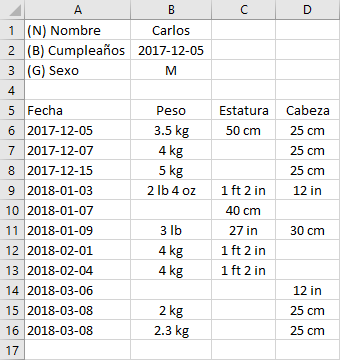The CSV file can be generated using Excel or a similar program. Column A should have the date, column B should have the weight, column C should have the height, and column D should have the head measurement. All the values should be entered with units. Adding column headers is optional.
Note on Date Formatting: Some of the examples here show a US-style date string (month/day/year). The best format to use for guaranteed consistency between devices is the ISO international format of (yyyy-mm-dd). In this format, the first of March 2017 would be "2017-03-01". Child Growth Tracker will always look first for an ISO date, followed by Locale-specific formats. This means that if you generate a CSV file in the US and list the first of March as (3/1/2017) and send it to someone in the UK, their phone will import that date as the third of January.
The import will skip any rows it cannot understand. In this example, it imported four measurements and skipped the first row (the header row) and the last row (blank row 6). If it cannot understand just a part of an entry (for example, if you entered "23 in" in the weight column) it would just skip that part of the measurement.
You can also include a header section with data about the child, including name, birthday, due date, and gender. These can be in any order, and you can omit any of them (for example, if you don't know the due date you don't have to put it in). The word in Column A should begin with (N) for name, (B) for birthday, (D) for due date, or (G) for gender. Any text after that is ignored so it can be in whatever language you prefer. The gender should be indicated as "M" for male, or "F" for female.
When you save it, select the CSV file format with UTF-8 encoding.






